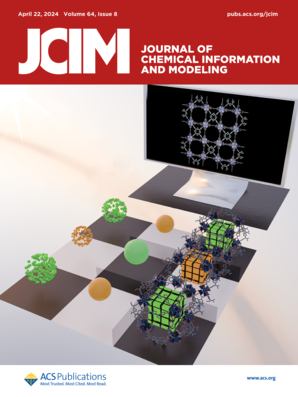Entabolons: How Metabolites Modify the Biochemical Function of Proteins and Cause the Correlated Behavior of Proteins in Pathways.
IF 5.6
2区 化学
Q1 CHEMISTRY, MEDICINAL
引用次数: 0
Abstract
Although there are over 100,000 distinct human metabolites, their biological significance is often not fully appreciated. Metabolites can reshape the protein pockets to which they bind by COLIG formation, thereby influencing enzyme kinetics and altering the monomer-multimer equilibrium in protein complexes. Binding a common metabolite to a set of protein monomers or multimers results in metabolic entanglements that couple the conformational states and functions of nonhomologous, nonphysically interacting proteins that bind the same metabolite. These shared metabolites might provide the collective behavior responsible for protein pathway formation. Proteins whose binding and functional behavior is modified by a set of metabolites are termed an "entabolon"─a portmanteau of metabolic entanglement and metabolon. 55%-60% (22%-24%) of pairs of nonenzymatic proteins that likely bind the same metabolite have a p-value that they are in the same pathway, which is <0.05 (0.0005). Interestingly, the most populated pairs of proteins common to multiple pathways bind ancient metabolites. Similarly, we suggest how metabolites can possibly activate, terminate, or preclude transcription and other nucleic acid functions and may facilitate or inhibit the binding of nucleic acids to proteins, thereby influencing transcription and translation processes. Consequently, metabolites likely play a critical role in the organization and function of biological systems.内毒素:代谢产物如何改变蛋白质的生化功能并引起蛋白质在途径中的相关行为。
虽然有超过10万种不同的人体代谢物,但它们的生物学意义往往没有得到充分认识。代谢物可以通过形成COLIG重塑它们结合的蛋白质口袋,从而影响酶动力学并改变蛋白质复合物中的单体-多聚体平衡。将一种共同的代谢物与一组蛋白质单体或多聚体结合会产生代谢缠结,使与同一代谢物结合的非同源、非物理相互作用的蛋白质的构象状态和功能相互结合。这些共同的代谢物可能提供了负责蛋白质途径形成的集体行为。结合和功能行为被一组代谢物改变的蛋白质被称为“entabolon”──代谢缠结(metabolic entanglement)和代谢物(metabolon)的合成词。55%-60%(22%-24%)可能结合同一代谢物的非酶蛋白对,其p值<0.05(0.0005)。有趣的是,多种途径中最常见的蛋白质对结合了古代代谢物。同样,我们提出代谢物如何可能激活、终止或阻止转录和其他核酸功能,并可能促进或抑制核酸与蛋白质的结合,从而影响转录和翻译过程。因此,代谢物可能在生物系统的组织和功能中发挥关键作用。
本文章由计算机程序翻译,如有差异,请以英文原文为准。
求助全文
约1分钟内获得全文
求助全文
来源期刊
CiteScore
9.80
自引率
10.70%
发文量
529
审稿时长
1.4 months
期刊介绍:
The Journal of Chemical Information and Modeling publishes papers reporting new methodology and/or important applications in the fields of chemical informatics and molecular modeling. Specific topics include the representation and computer-based searching of chemical databases, molecular modeling, computer-aided molecular design of new materials, catalysts, or ligands, development of new computational methods or efficient algorithms for chemical software, and biopharmaceutical chemistry including analyses of biological activity and other issues related to drug discovery.
Astute chemists, computer scientists, and information specialists look to this monthly’s insightful research studies, programming innovations, and software reviews to keep current with advances in this integral, multidisciplinary field.
As a subscriber you’ll stay abreast of database search systems, use of graph theory in chemical problems, substructure search systems, pattern recognition and clustering, analysis of chemical and physical data, molecular modeling, graphics and natural language interfaces, bibliometric and citation analysis, and synthesis design and reactions databases.

 求助内容:
求助内容: 应助结果提醒方式:
应助结果提醒方式:


